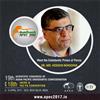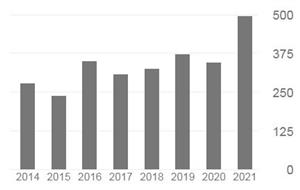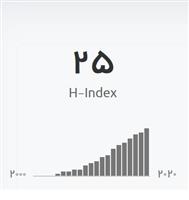Accuracy of Two Root Canal Length Measurement Devices Integrated into Rotary Endodontic Motors When Removing Gutta‐Percha from Root‐Filled Teeth
Aim To evaluate ex vivo the accuracy of the integrated electronic root canal length measurement devices within TCM Endo V and Tri Auto ZX motors whilst removing gutta-percha and sealer from filled root canals. Methodology Forty freshly extracted maxillary and mandibular incisor teeth with mature apices were selected. Following access cavity preparation, the length of the root canals were measured visually 0.5 mm short of the major foramen (TL). The canals were prepared using the HERO 642 system and then filled with gutta-percha and AH26 sealer using a lateral compaction technique. After 7 days the coronal temporary filling was removed and the roots mounted in an alginate experimental model. The roots were then randomly divided in two groups. The access cavities were filled with chloroform to soften the gutta-percha and allow its penetration using the Tri Auto ZX and the TCM Endo V devices in groups 1 and 2, respectively. The ‘automatic apical reverse function’ (ARL) of both devices was set to start at the 0.5 setting and the rotary instrument inserted inside the root canal until a beeping sound was heard and the rotation of the file stopped automatically. Once the auto reverse function had been initiated, the foot pedal of the motor was inactivated and the rubber stop placed against the reference point. The distance between the file tip and rubber stop was measured using a digital calliper to 0.01 mm accuracy (ARL). Then, a size 20, 0.02 taper instrument was attached to each device and inserted into the root canals without rotary motion until the integrated ERCLMDs positioned the instrument tips at the 0.5 setting as suggested by the devices. This length was again measured using a digital calliper (EL). The Mann–Whitney U-test was used to investigate statistical differences between the true canal length and those indicated by the two devices when used in ‘automatic ARL and when inserted passively (EL).
Results: In the presence of gutta-percha, sealer and chloroform, the auto-reverse function for the Tri Auto ZX and TCM Endo V, set to start at 0.5 level, was initiated beyond the foramen in 60% and 95% of the samples, respectively during active (rotary) penetration of the instruments. There was a statistically significant difference between the devices for the mean discrepancies between the length at which the auto reverse function was initiated and the true length (P < 0.001). Electronic detection of the apical terminus when the instruments were introduced passively (not rotating) was beyond the foramen in 20% and 37% of cases in the Tri Auto ZX group and the TCM Endo V group, respectively. There was a statistically significant difference between the devices for the mean discrepancies between the electronically determined (passive) length and true length (P < 0.01).
Conclusion: The auto reverse function of the Tri Auto ZX and TCM Endo V devices, set to start at 0.5 level, were initiated beyond the foramen in the majority of root-filled teeth during active (rotating) penetration of root filling material. Thus, this automatic function must be used with caution when removing guttapercha root fillings. There were significant differences between the accuracy of measurements in active (rotating) and passive (not-rotating) modes; both devices were more accurate when used in passive mode. However, the Tri AutoZX was significantly more accurate in a greater proportion of cases.














